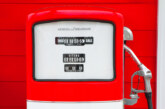Trailer tyre servicing is challenging, but get it right and you’ll be rewarded with long tyre life and improved fuel economy, says Tony Stapleton, Fleet Business Manager for Continental Tyres.
Trailer annual mileages and loadigs have a big impact on tyre wear, yet both local and national fleets face challenges monitoring this. Local fleets will see their trailers most days, but it’s still a tough management task keeping track of individual trailer utilisation and the weights they are running at.
National fleets, on the other hand, have to manage a transient trailer pool; trailers are treated in the same ways as trucks – a valuable asset requiring maximum utilisation, which is moved around from site to site depending on contractual and seasonal requirements. The challenge for these fleets is locating them when the time comes for routine safety inspections.
However, the one thing that both should pay attention to is maintaining correct tyre pressure – it is absolutely key when it comes to maximising tyre life, yet it can be neglected by many fleets or not checked as regularly as it should be.
Most truck and trailer tyres have a tolerance of +/- 10% prior to any alert or immediate action being taken to correct to the recommended pressure. When developing proposals, and as an ongoing measure with fleets, Continental carries out tyre audits to measure the typical tyre pressures across the fleet. Many operators are surprised to discover that over 20% of the fleet operate outside of the +/- 10% tolerance.
That’s worth bearing in mind when you take into account that tyres just 5% outside their recommended pressures can worsen fuel economy by 0.5%. So make sure your servicing schedule includes a regime to manage tyre pressures and ensure they are correct.
Whether you do it in-house or out- source tyre servicing, maintaining correct pressures is also about having the right equipment. Not all compressors, for example, can deliver the extra 5psi pressure that the latest generation of tyres require for optimum performance. For example, Continental now recommends that front axle tyres on a fully-laden tractor unit, previously operating at 125psi, should now be operated at 130psi on latest generation products, and tri-axle trailer on trunking operations should be inflated up to 130psi.
Trailer specification
Trailer tyres have become somewhat commoditised – buyers, including the trailer manufacturers, will often fit the cheapest available. It pays to look beyond the initial tyre price, however, and have a view on how much that tyre is going to cost to maintain once it is on the road.
Tyre performance, together with damage and servicing costs, all need to be put into the equation. How much impact each element has will depend on the operation. Damage costs, for example, can be as high as 15-20% for off-road vehicles, but as low as 5-7% for trailers on trunking operations between distribution centres.
The trailer specification, annual mileage and operation all need to be considered when specifying tyres. Tankers are high- value and tend to stay coupled to their tractor unit – so tyres are relatively easy to manage. Contrast that with curtain-sided trailers: one tractor unit will operate with a ratio of two, three or four trailers – while in certain operations this may be as high as one tractor unit to six trailers. On these operations, the trailers will be towed by various tractor units.
Fuel economy
Trailers do make a significant contribution to fuel economy performance, but measuring how much can be tricky because of variations in operational patterns, routes travelled, weather conditions, loadings and so on.
One tip is to use the EU Tyre labelling regulations as a guide. Introduced in 2012, to help operators make informed choices about the tyres, the label will provide some basic information on what to expect in terms of fuel economy.
For example, there can be 3.5L/km difference between a trailer tyre with a B rating and one rated C – and ones rated D, E or F will perform even worse. For safety conscious operators, there can also be a five to 10m difference in stopping distance from 80km/h between Wet Grip classifications.
Double Deck Trailers
A change in tyre specification on double- deck trailers in the past few years is credited with saving operators up to an astonishing 35% in tyre costs.
The savings are achieved because more operators are now specifying larger 445/45-19.5 super single tyres on their double-deck trailer in place of the twin 215/75 tyres on 17.5″ wheels that have been the standard specification for double-deck trailers. The 17.5″ wheel fitment was dictated by the need to get the trailer deck as low as possible to maximise the interior load volume.
However, the smaller the wheel, the more revolutions per mile and the hotter the tyres run, the greater the stress it is under – none of this is good for tyre life. Tyre costs have been higher for some, than for other trailers, not least because twin- wheel fitments, not single-wheel, are now standard on other trailers.
The 445/45 also permits a low deck height, and Continental estimates the 445/45 tyre now represents over half of its specified fleet business, and will be the predominant size on this type of trailer in the market and will eventually be the solution for 80% + of the market.
There are some big benefits. Obviously fleets are now only paying for six rather than 12 tyres – one super-single 445/45- R19.5 is about the same price as two 215/75s, so purchase costs are similar. There’s a weight saving of 12% – a useful payload increase for those operators who can use it.
The big benefit, though, is in reduced servicing costs – the larger size means there are fewer revolutions/mile so, the tyre will run cooler. The tread volume is higher, so 445/45s will cover more miles before needing a retread – that saves workshop costs and minimises trailer downtime.
It’s also much easier to carry out tyre pressure checks, manual or as an integrated solution – as many workshops appreciate, servicing twin-wheel fitments, especially on double decks where access is limited, can be time-consuming.









